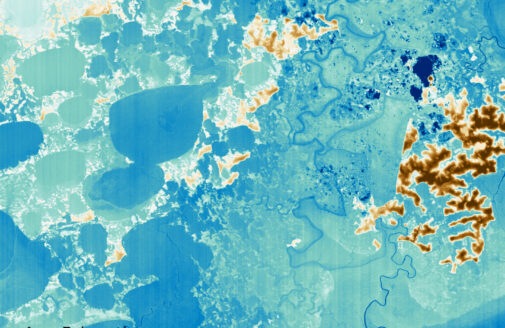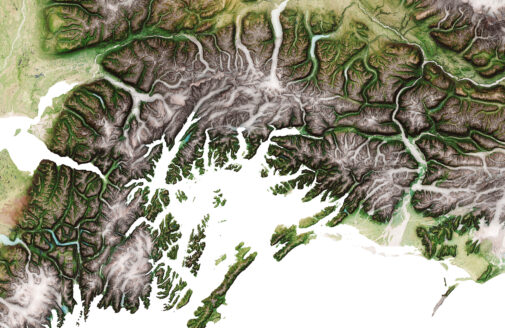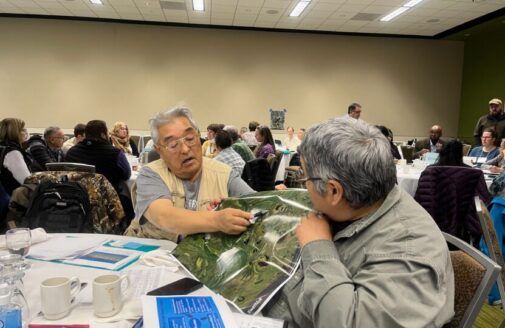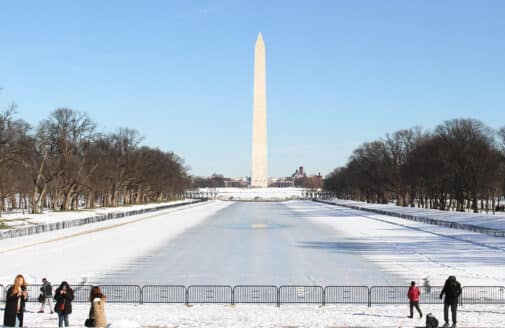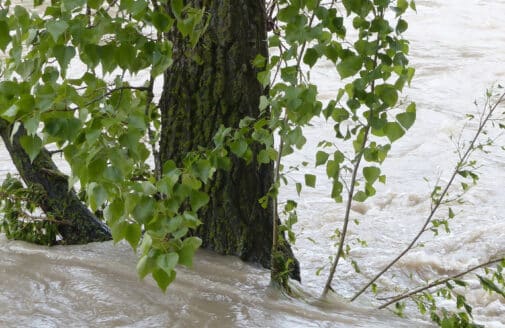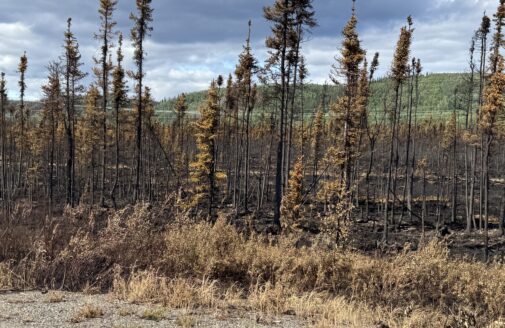Meet the cartographers putting climate change on the map
Maps are essential to telling the story of our changing world
Greg Fiske displays the Woodwell map table to a film crew at the Center’s offices.
photo by Heather Goldstone
In a busy hallway of the Dena’ina Civic and Convention Center in Anchorage, Alaska, Arctic Communications Specialist, Jess Howard, and Climate Adaptation Specialist, Brooke Woods, stand in front of a large print-out of a map of Alaska. The map was created by Greg Fiske, Senior Geospatial Analyst at Woodwell Climate, to show the topography of the state in artfully shaded greens, browns, and whites. At the moment it is covered in handwritten notes.
Woods had suggested they bring the map to the Alaska Forum on the Environment (AFE) and invite conference attendees to add notes describing their community’s experiences with the impacts of climate change. Their table remained crowded throughout the day, as people stopped to point out the rivers and mountain ranges around where they lived, and swap stories about erosion, flooding, permafrost thaw, and disappearing species.
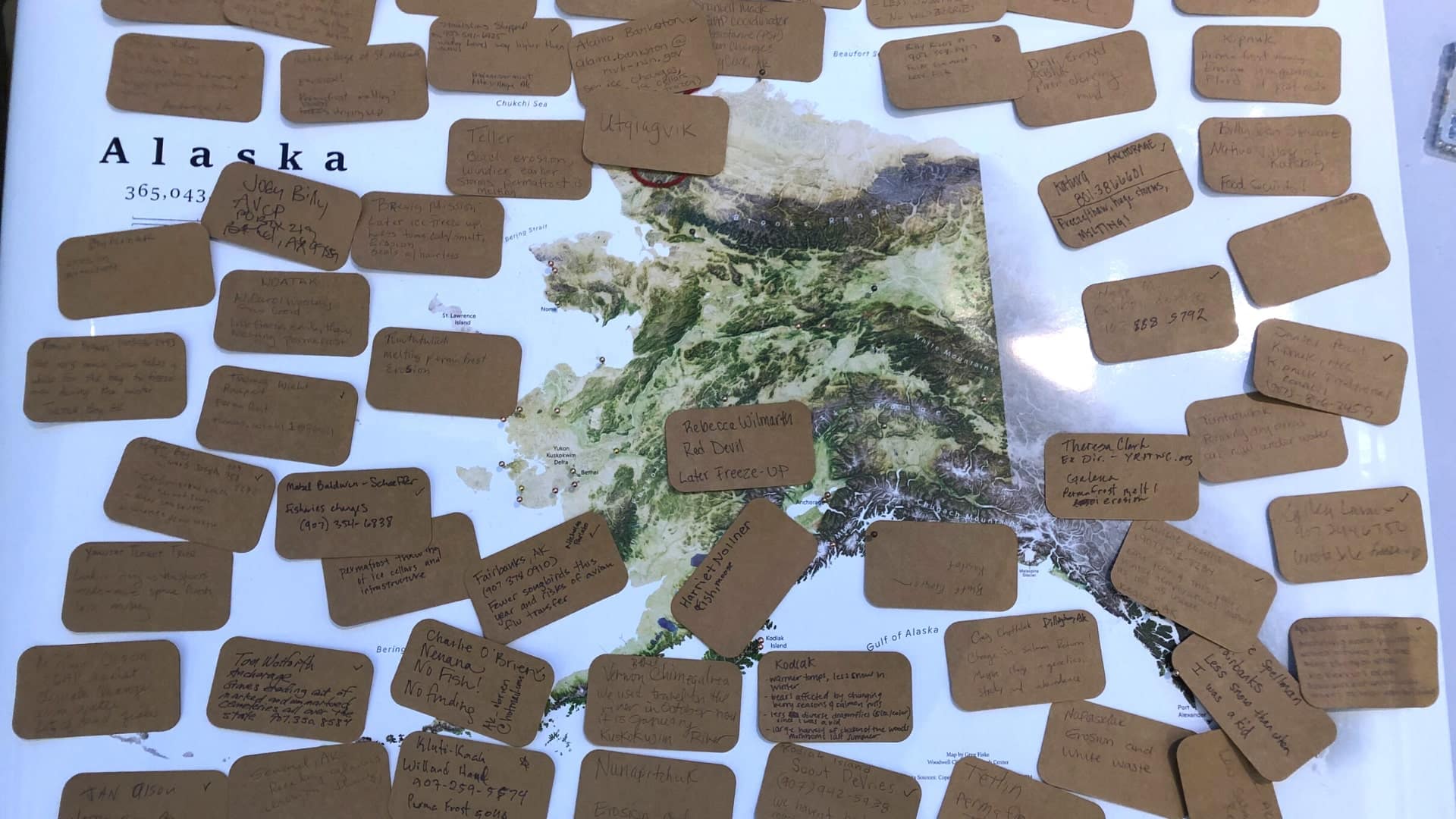
Fiske’s map covered in notes from AFE attendees, documenting their experiences with the impacts of climate change.
photo by Jess Howard
“Even on this huge map of Alaska,” says Howard. “People were coming up and immediately saying ‘There’s this river, there we are.’ Knowing exactly where to point was just so immediate because of the deep connection Alaska Native communities have to the land and water, of which they are the original stewards.”
Fiske who, alongside Cartographer Christina Shintani, leads the Center’s map-making activities, has seen many moments like this one over his decades-long career—moments where maps start conversations, foster connections, and get people thinking. It’s the reason he brings maps with him wherever he goes, and encourages others to do the same. It’s the reason he keeps a table at the Center’s offices covered in printed maps, sometimes finished pieces for display, sometimes draft versions to workshop.
Because when the maps come out, so do the stories. And the stories help us better understand our place in the changing world.
map by Greg Fiske
Making maps is a method of discovery
“But Google Maps exists. Haven’t all the maps been made already?”
Fiske and Shintani have heard it before: the idea that “everything has already been mapped.” Why should we create new maps of familiar places?
In a world beset by hundreds of transformative forces, of which climate change is one, Shintani responds that cartography is just as important now, if not more important than ever.
“The world is constantly changing,” says Shintani. “If it weren’t, we wouldn’t spend billions of dollars to capture satellite imagery every minute of the day. Political boundaries change every year, glaciers disappear, wildfires break out and alter the landscape, and we have to map the physical and social phenomena to understand that changing world.”
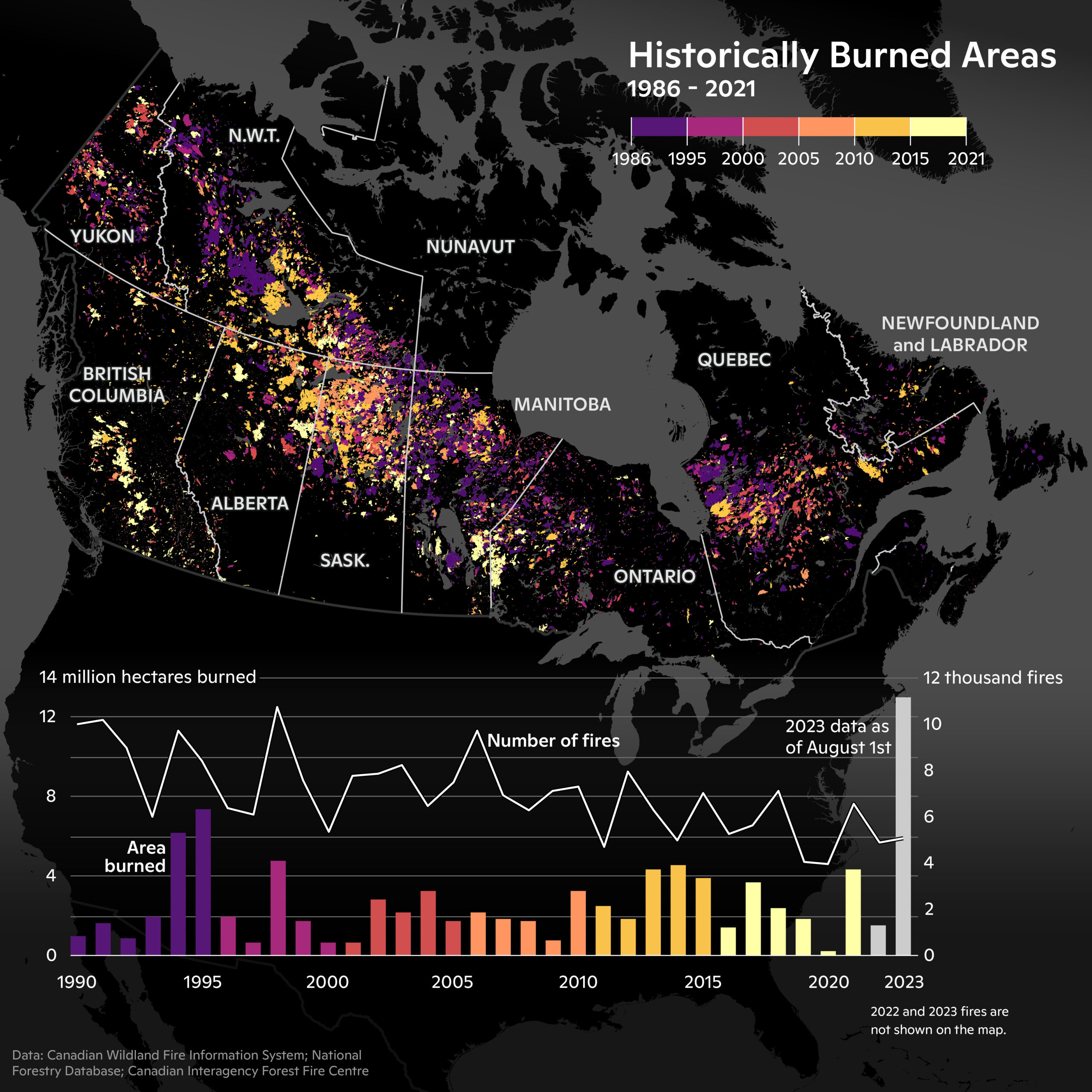
map by Christina Shintani
The act of creating a map can also be a method of revealing something new from existing data, which is why cartography plays a central role in research at Woodwell Climate.
Fiske and Shintani field frequent requests from scientists for maps to accompany research papers. According to Fiske, “Sometimes the data for that is readily available, but sometimes it takes an entire geospatial analysis to derive what you need to make the map. And you won’t really know until you start iterating.” Often, viewing data on a map will inspire new scientific questions for researchers to chase down. The act of creating maps is not just an end product, it can be a critical step in the scientific process.
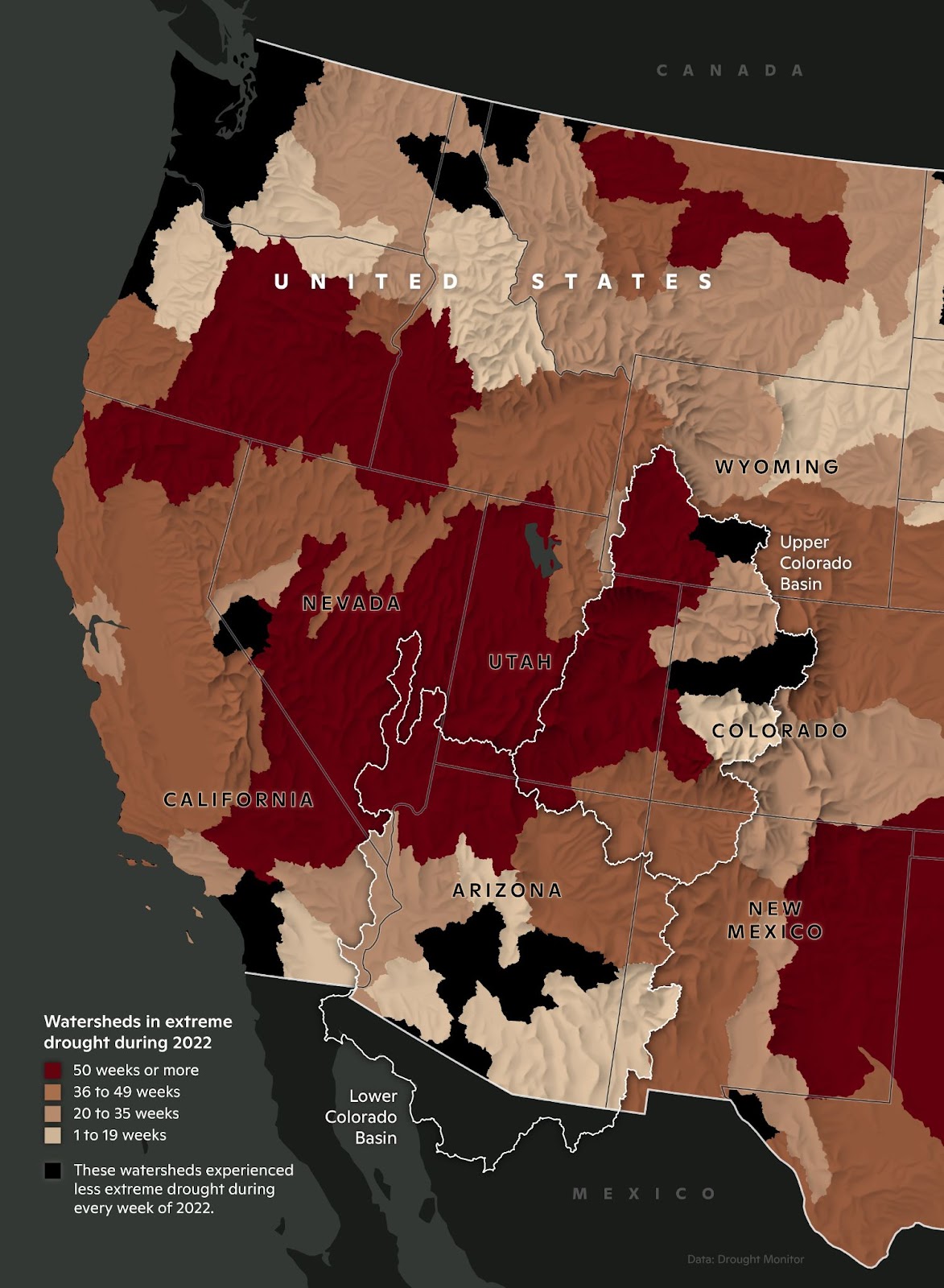
map by Christina Shintani
Cartography requires a little bit of everything
In their time at the Center, Fiske and Shintani have worked on maps detailing forest carbon in the United States, global drought forecasts, fire detections in the Amazon rainforest, and Arctic communities located on permafrost ground—they are no strangers to working across disciplines.
“Cartographers are generalists,” says Shintani. “We have to know a little bit about a lot of things, which actually benefits us as climate communicators, since the maps we’re making aren’t meant to inform other expert climate scientists, they are trying to convey information to everyone else.”
“Cartography isn’t really one profession,” Fiske clarifies. “It’s a collection of professions.”
A modern cartographer, according to Fiske, is a data analyst, a statistician, a designer, a programmer, a storyteller, and an artist all rolled into one. Skills from each profession, and a healthy curiosity about a hundred other topics, are required in order to create maps that are informative, attention-grabbing, and intuitive to read. Fiske entered into cartography through the world of computer coding, discovering an affinity for programming in his high school’s computer lab. He picked up the other skills later, with guidance from mentors, learning first to apply coding to geospatial data, and then how to display that data visually, and even make it beautiful.
Shintani’s entryway into cartography was through science. She had intended to study the physical geography of rivers, when a class on cartography changed her direction.
“With maps, I could organize everything in a way that made sense to me—because the world is so often organized in ways that don’t make sense—and I could make them beautiful,” says Shintani. “It was the first time I felt like I was really good at something.”
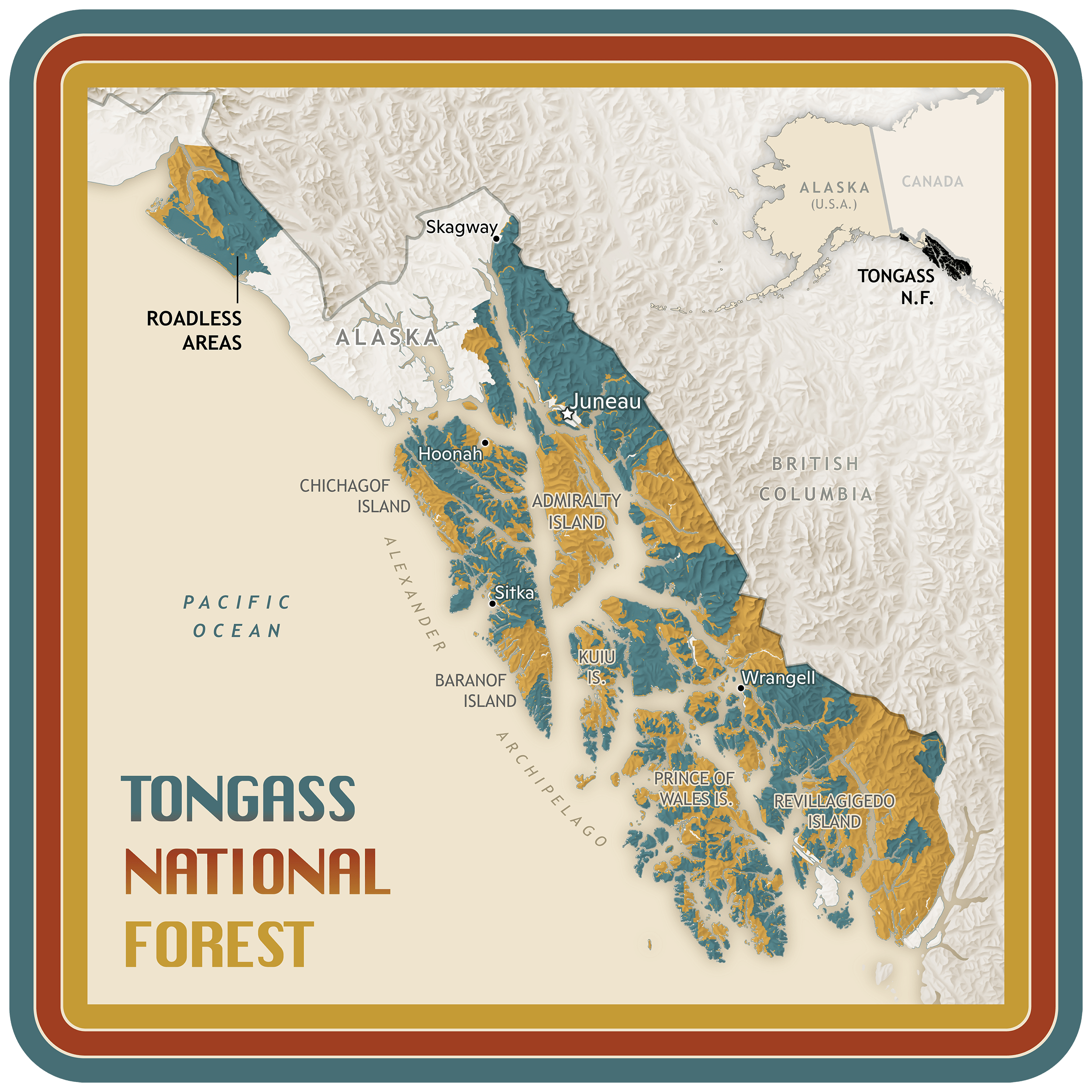
map by Christina Shintani
Fiske and Shintani’s cartographic talents eventually brought them both to Woodwell Climate, where their knowledge of various fields has helped them solve research questions and communicate new findings to the public.
“The day-to-day involves bringing together datasets, developing a clear story, making it look intuitive through design, taking the experts’ thoughts and data and making it a little more tangible for folks,” says Shintani.
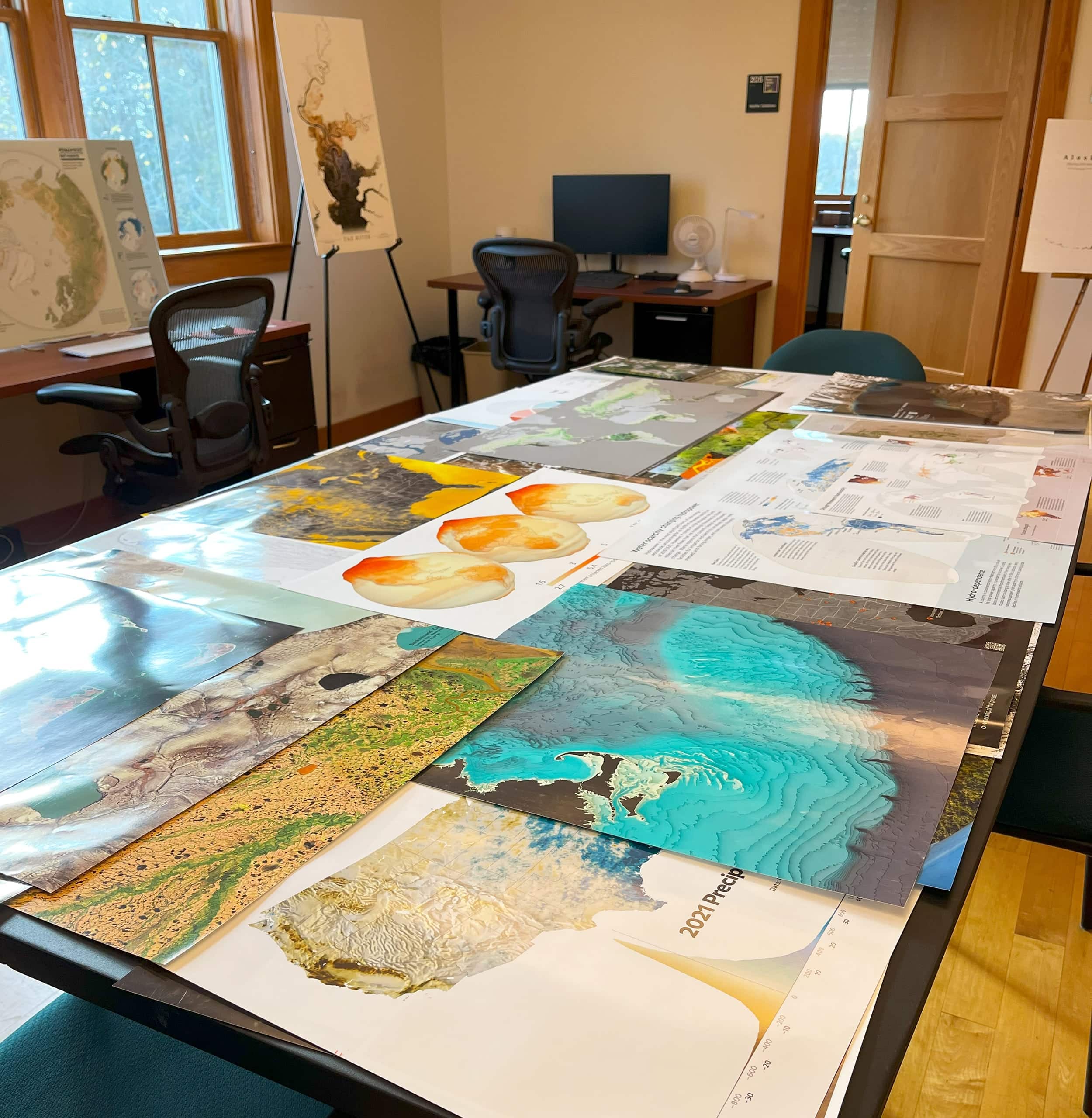
The map table at the Woodwell Climate offices.
photo by Greg Fiske
To map something is to understand it
In another era, a cartographer might also have been somewhat of an adventurer—conducting expeditions to map hills and valleys, using mathematical conversions to capture the detailed curves of a coastline in a meticulously hand-drawn document. These days, cartography has much more to do with sitting behind a computer, manipulating massive datasets created by satellite observation and tweaking color palettes and font sizes using a variety of software.
The proliferation of satellite data has made the process of map-making much quicker and more accessible—no longer requiring long expeditions just to gather information on topography or ground cover. It’s allowed a shortcut to understanding the shape of places you’ve never been. A shortcut, Fiske says, but not a replacement.
“I would never have been able to make that map,” says Fiske, referring to the map of Alaskan topography that Howard and Woods brought to AFE, which earned him two awards from the Esri User Conference earlier this year. “If I hadn’t been to Alaska, seen it from an airplane, looked at those mountains, and seen what it looks like between the green valleys and the white glaciers.”
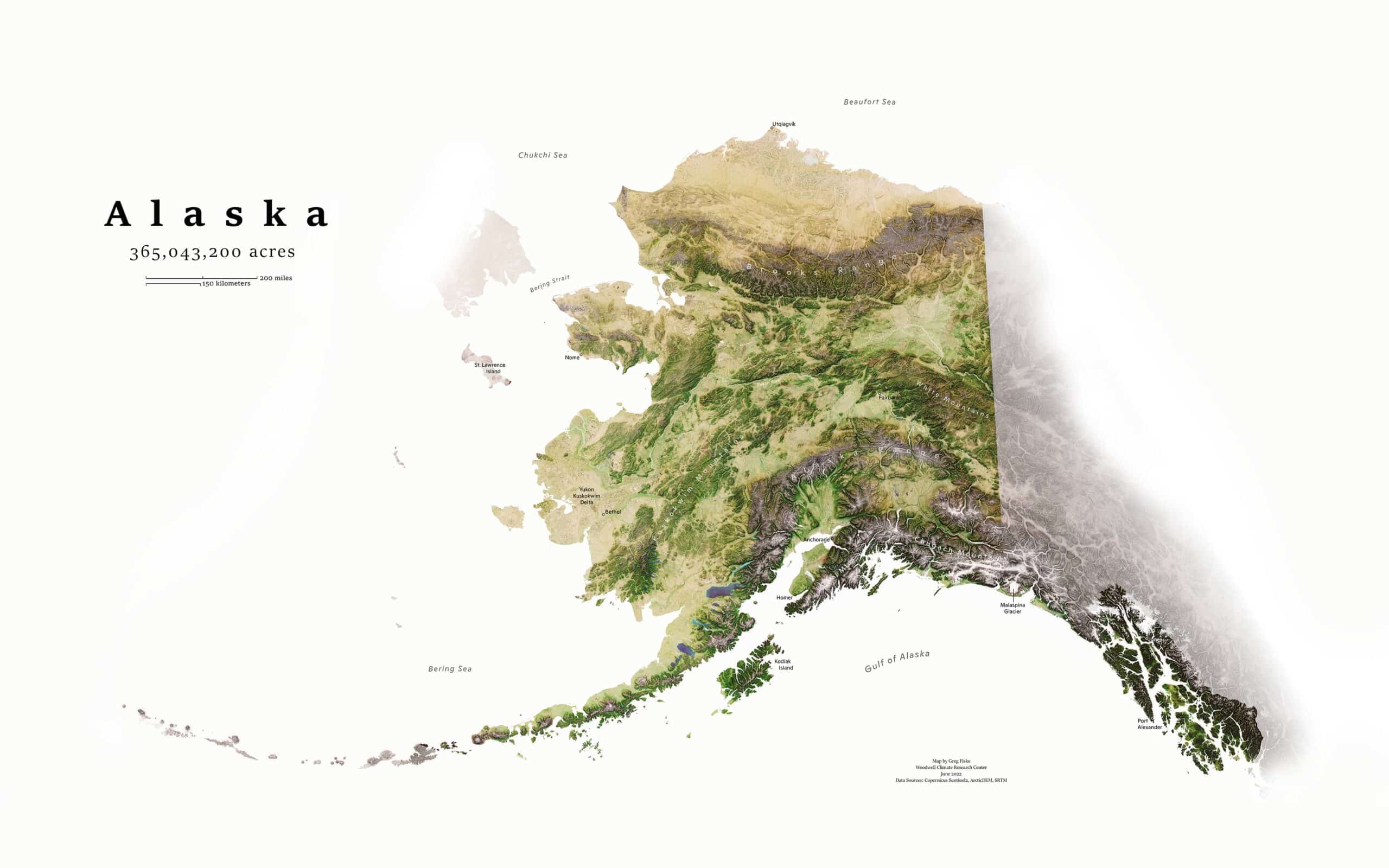
map by Greg Fiske
Travel is something Fiske believes should remain a part of the cartographer’s toolkit whenever possible, because a thorough understanding of a place is critical to being able to map it. Things like the natural colors of the landscape at different times of year, the true scale of glaciers when you are standing beneath them, the shape of a slumping and eroding hillside, give a fuller picture of the reality on the ground.
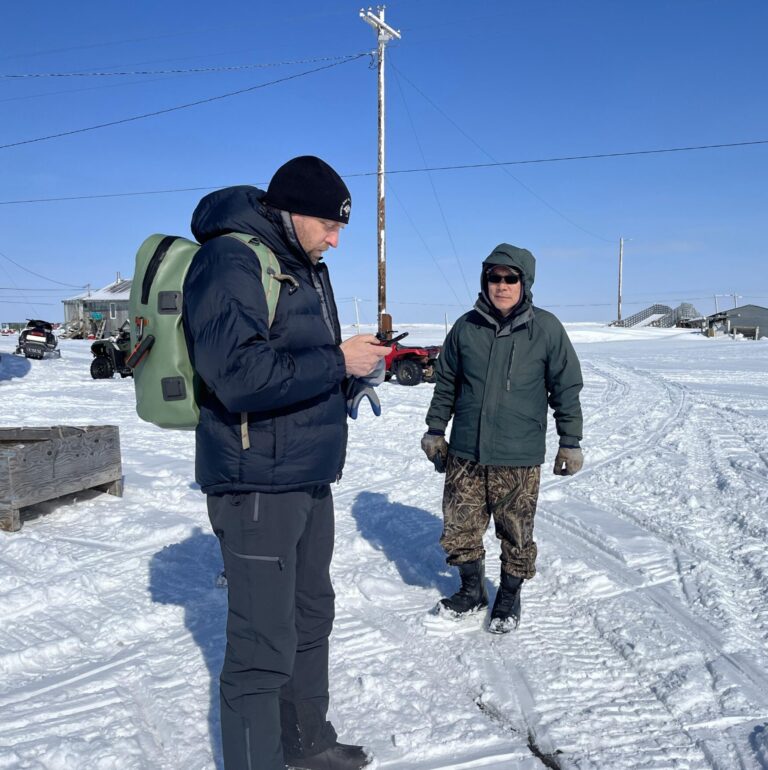

(left) Fiske visiting the village of Kwigillingok, Alaska.
photo by Sue Natali
(right) Fiske and Shintani on a fishing trip in Cape Cod waters.
photo courtesy of Greg Fiske
“A good map is a close connection to reality,” says Fiske. The closer to reality a map is, the more intuitive it is to orient yourself on it, and understand the information the map is trying to convey. Fiske travels regularly, joining float trips with Science on the Fly or Permafrost Pathways’ visits to field sites and Alaska Native partner communities. He plays a role in the science, helping navigate and collect data, but values the experiences more for the insights he can use to inform future maps.
“If you’ve stood on the tundra,” he says. “Then you can make a better map of the tundra.”
A place in the world
A decade ago, Fiske recalls, he was helping a colleague map her work studying chimpanzees in the Congo Rainforest.
“We were going through and pulling coordinates out, sifting through notebooks that had obviously been sitting in the field for years, covered in water stains and mud.” They were overlaying documented nesting sites with data on forest type and at some point, Fiske turned around and realized she was in tears.
“Seeing it formulate on the screen, she was overcome with emotions,” says Fiske. “The map reflected what she had been carrying around in her mind the whole time.”
Maps, in Fiske’s experience, create instant—sometimes emotional—connections between people and places. They place individuals in the context of the wider world and put long-held ideas down on paper to be shared.
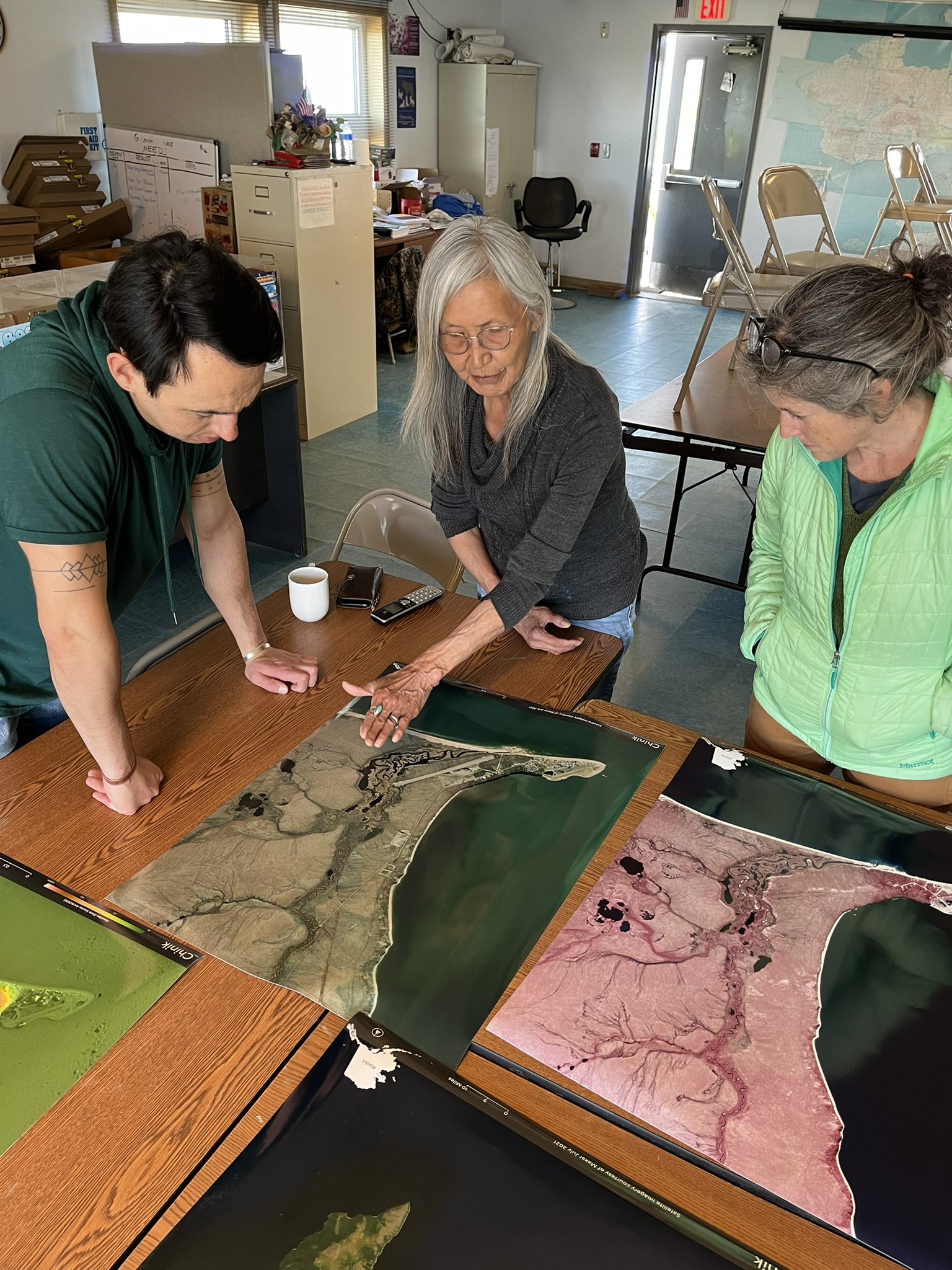
Sue Natali speaking with Permafrost Pathways partners in Golovin, AK.
photo by Greg Fiske
Which is why Fiske believes anyone can and should make maps. He has been helping the Permafrost Pathways team bring cartography into their work with Indigenous Arctic communities through a method called participatory mapping, which combines community input with technical expertise to create maps representing collective knowledge. Howard is also working with Fiske to create a digital version of his Alaskan topography map that incorporates the stories shared through the exercise at AFE.
Looking forward, Fiske wants to push his career more and more towards helping others create maps. Because everyone has stories to share about the places they know—whether they come from generations spent living on a landscape, or one lifetime’s work spent studying a single ecosystem.
“I want to help folks make maps,” says Fiske. “And tell their story.”




